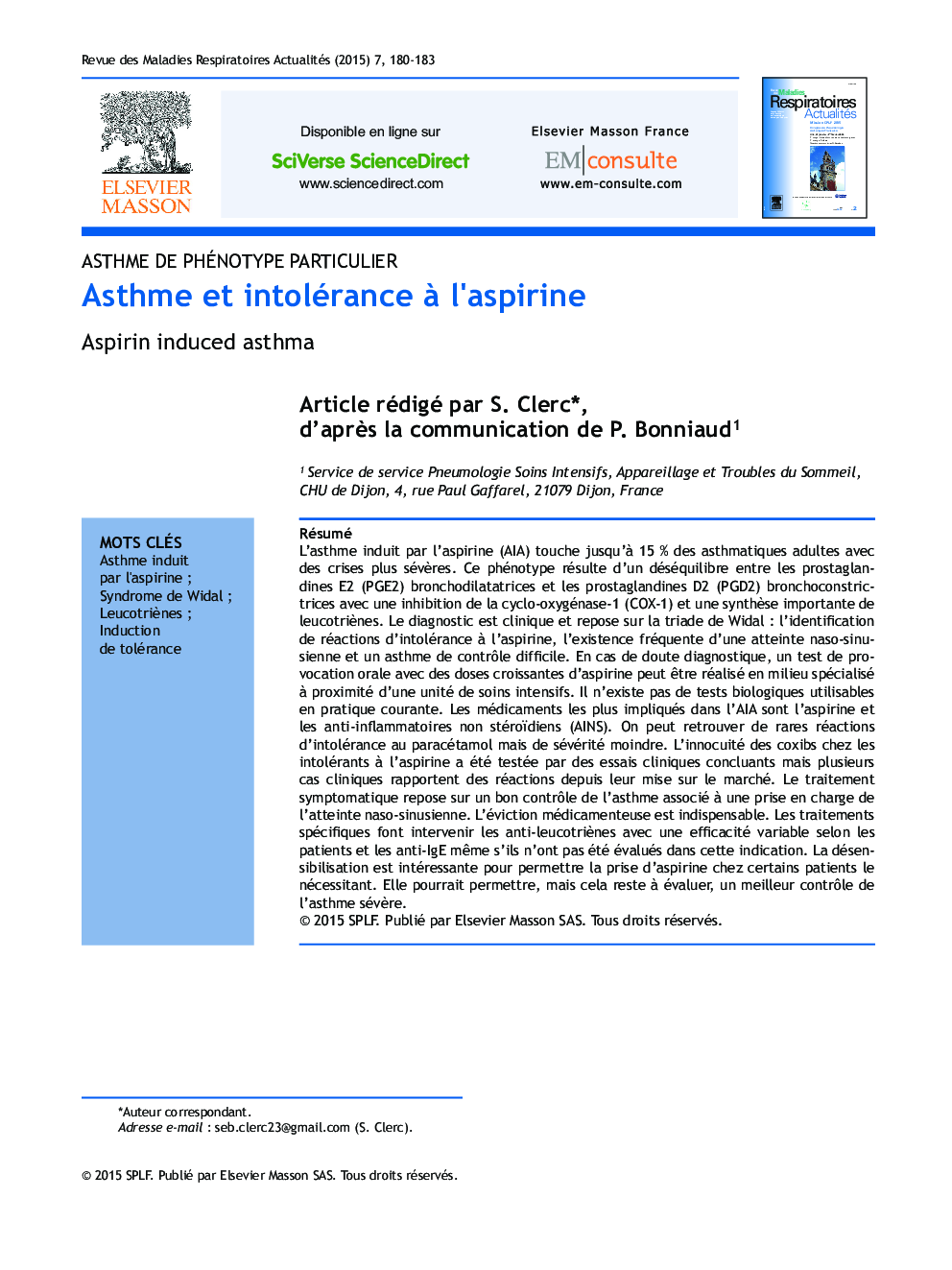| Article ID | Journal | Published Year | Pages | File Type |
|---|---|---|---|---|
| 4215532 | Revue des Maladies Respiratoires Actualités | 2015 | 4 Pages |
Abstract
15% of the adult asthmatic population has aspirin induced asthma (AIA). Their exacerbations are severe and sometimes fatal. AIA results from an imbalance of prostaglandins PGD2 (bronchoconstriction) and PGE2 (bronchodilatator), with an inhibition of COX-1, leading to an increased synthesis of leucotrienes. The clinical diagnosis is based on Widal's triad: aspirin intolerance reactions, nasal and sinus symptoms (polyposis, chronic nasal obstruction) and poorly controlled asthma. In case of diagnostic uncertainty, an oral provocation test with increasing doses of aspirin can be undertaken near an intensive care unit. There is no biological test available in clinical practice. The drugs mainly involved in AIA are aspirin and NSAI. Occasionally reactions occur to paracetamol but they are less severe. No allergic reactions were found when coxibs were tested in clinical trials in aspirin intolerant subjects but some recent case reports describe asthma and allergic reactions with these medications. Symptomatic treatment of AIA is based on effective asthma control with managemnet of the nasal/sinus involvement and avoidance of aspirin and NSAI. Specific treatment involves anti-leucotrienes in spite of varying effectiveness. Anti-IgE agents are often used even though they have not been evaluated for this indication. Aspirin desensitization can be tried for certain patients but this needs to be evaluated.
Related Topics
Health Sciences
Medicine and Dentistry
Pulmonary and Respiratory Medicine
Authors
S. Clerc, P. Bonniaud,
